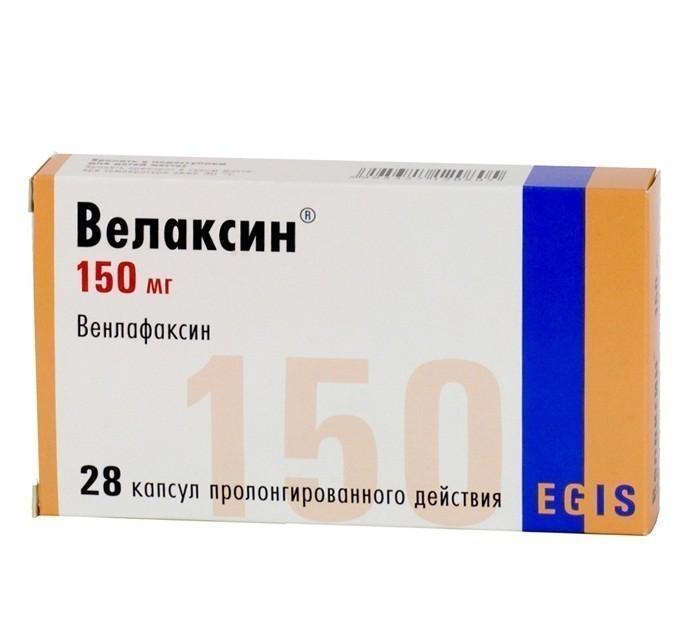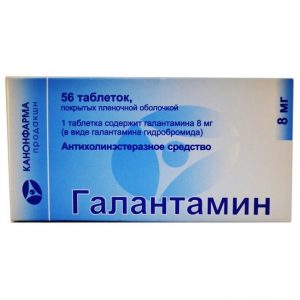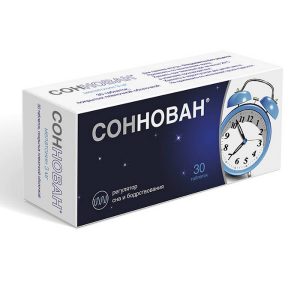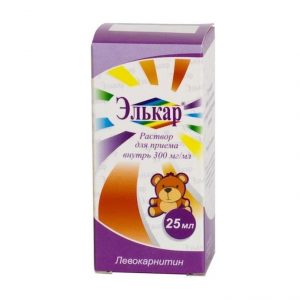Description
Release form
retard capsules
Packing
28 pcs. per pack
Pharmacological action
Velaxin is an antidepressant.
The chemical structure of venlafaxine cannot be attributed to any known class of antidepressants (tricyclic, tetracyclic or others). It has two active enantiomeric racemic forms.
The antidepressant effect of venlafaxine is associated with increased neurotransmitter activity in the central nervous system. Venlafaxine and its main metabolite, O-desmethylvenlafaxine (EFA), are potent inhibitors of serotonin and norepinephrine reuptake and weakly inhibit dopamine reuptake by neurons. Venlafaxine and EFA equally effectively influence the reuptake of neurotransmitters. Venlafaxine and EFA reduce beta-adrenergic reactions.
Venlafaxine has no affinity for m- and n-cholinergic receptors, histamine H 1 receptors and 1 -adrenoreceptors of the brain. Venlafaxine does not inhibit MAO activity. Has no affinity for opioids, benzodiazepine, phencyclidine or N-methyl-d-aspartate (NMDA) receptors.
Indications
Depression of various etiologies (treatment and prevention).
Contraindications
Severe renal impairment (creatinine clearance less than 10 ml / min).
Severe impairment of liver function.
Concomitant use of MAO inhibitors.
Children and adolescents under 18 years of age (safety and effectiveness for this category of patients have not been proven).
Established or suspected pregnancy.
Lactation (breastfeeding).
Hypersensitivity to the drug.
Caution is advised to prescribe the drug in the following cases:
Recent myocardial infarction.
Unstable angina pectoris.
Arterial hypertension.
tachycardia.
History of cramps.
Intraocular hypertension.
Angle-closure glaucoma.
History of manic states.
Predisposition to bleeding from the skin and mucous membranes.
Initially reduced body weight.
Pregnancy and lactation
Pregnancy
The safety of Velaxin during pregnancy has not been proven. Therefore, use during pregnancy (or presumed pregnancy) is possible only if the intended benefit to the mother outweighs the possible risk to the fetus.
Women of childbearing age should use reliable methods of contraception during treatment with the drug and consult a doctor immediately in case of pregnancy or planning a pregnancy.
Lactation
Venlafaxine and the EFA metabolite are excreted in breast milk. The safety of these substances for newborns has not been proven, so if you need to take the drug during lactation, you should decide whether to stop breastfeeding. If the mother s treatment was completed shortly before the birth, the newborn may experience symptoms of drug withdrawal.
Special instructions
The abrupt discontinuation of therapy with Velaxin (like other antidepressants), especially after use in high doses, can cause withdrawal symptoms, in this connection, it is recommended that the dose be gradually reduced before discontinuing the drug. The duration of the period required to reduce the dose depends on the dose, the duration of therapy, as well as the individual sensitivity of the patient.
In patients with depressive disorders, the likelihood of suicidal attempts should be considered before starting any drug therapy. Therefore, to reduce the risk of overdose at the beginning of treatment, the drug should be used whenever possible in the minimum effective dose, and the patient should be under close medical supervision.
In patients with affective disorders treated with antidepressants (including venlafaxine), hypomanic or manic conditions may occur. Like other antidepressants, venlafaxine should be prescribed with caution to patients with a history of mania. Such patients need medical supervision.
Velaxin (like other antidepressants) should be used with caution in patients with a history of epileptic seizures. Venlafaxine treatment should be discontinued if epileptic seizures occur.
Venlafaxine should be prescribed with caution to patients who have recently suffered myocardial infarction and suffer from decompensated heart failure, since the safety of the drug in this category of patients has not been studied.
Caution is advised to use the drug in patients with tachyarrhythmia. Against the background of treatment with the drug, an increase in heart rate is possible, especially during administration in high doses.
Patients should be warned of the need to immediately consult a doctor if rash, urticaria elements or other allergic reactions occur.
In some patients, while taking venlafaxine, a dose-dependent increase in blood pressure was noted, therefore, regular monitoring of blood pressure is recommended, especially during the period of clarification or increase in dose.
Patients, especially the elderly, should be warned of the possibility of dizziness and impaired sense of balance.
Like other serotonin reuptake inhibitors, venlafaxine may increase the risk of hemorrhages in the skin and mucous membranes. In the treatment of patients predisposed to such conditions, caution is necessary.
While taking venlafaxine, especially in conditions of dehydration or a decrease in bcc (including especially the elderly, should be warned about the possibility of dizziness and impaired sense of balance.
Like other serotonin reuptake inhibitors, venlafaxine may increase the risk of hemorrhages in the skin and mucous membranes. In the treatment of patients predisposed to such conditions, caution is necessary.
While taking venlafaxine, especially in conditions of dehydration or a decrease in bcc (including especially the elderly, should be warned about the possibility of dizziness and impaired sense of balance.
Like other serotonin reuptake inhibitors, venlafaxine may increase the risk of hemorrhages in the skin and mucous membranes. In the treatment of patients predisposed to such conditions, caution is necessary.
While taking venlafaxine, especially in conditions of dehydration or a decrease in bcc (including. in elderly patients and patients taking diuretics), hyponatremia and / or ADH secretion syndrome may be observed.
While taking the drug, mydriasis can be observed, and therefore it is recommended to control intraocular pressure in patients who are prone to its increase or suffer from angle-closure glaucoma.
Clinical trials to date have not revealed tolerance to or dependence on venlafaxine. Despite this, as with treatment with other drugs acting on the central nervous system, the doctor should establish careful monitoring of patients to detect signs of drug abuse. Careful monitoring and observation is necessary for patients who have a history of indications of such symptoms.
When prescribing Velaxin tablets to patients with lactose intolerance, the lactose content (84.93 mg in each tablet 37.5 mg) should be considered.
While taking venlafaxine, special care should be taken when conducting electroconvulsive therapy, as there is no experience with venlafaxine in these conditions.
Alcohol should be avoided during treatment with Velaxin.
Use in case of impaired liver function
In case of mild hepatic insufficiency (prothrombin time less than 14 sec), dosage regimen correction is not required. With moderate liver failure (prothrombin time from 14 to 18 seconds), the dose should be reduced by 50%. Venlafaxine is not recommended for severe liver failure, since reliable data on the safety of such therapy are not available.
Use in case of impaired renal function
In case of mild renal failure (creatinine clearance (CC) more than 30 ml / min), dosage regimen adjustment is not required. In renal failure of moderate severity (CC 10-30 ml / min), the dose should be reduced by 25-50%. Due to the lengthening of T 1/2 of venlafaxine and its active metabolite (EFA), such patients should take the entire dose 1 time / day. Venlafaxine is not recommended for severe renal failure (CC less than 10 ml / min), since reliable data on the safety of such therapy are not available.
Hemodialysis patients may receive 50% of the usual daily dose of venlafaxine after completing a hemodialysis session.
Use in pediatrics
Safety and effectiveness of the drug in children and adolescents under the age of 18 have not been studied.
Influence on the ability to drive vehicles and control mechanisms
Despite the fact that venlafaxine does not affect psychomotor and cognitive functions, it should be borne in mind that any drug therapy with psychoactive drugs can impair mental processes and reduce the ability to perform motor functions. The patient should be warned about this before starting treatment. If such violations occur, the extent and duration of the restrictions should be established by the doctor.
Composition
Active ingredients: venlafaxine (in the form of hydrochloride) 150 mg.
Excipients: lactose monohydrate (84.93 mg), microcrystalline cellulose, sodium starch glycolate (type A), anhydrous colloidal silicon dioxide, magnesium stearate.
Dosage and administration
Recommended starting dose is 75 mg in 2 divided doses (37.5 mg 2 times / day) daily. If after several weeks of treatment there is no significant improvement, the daily dose can beincrease to 150 mg (75 mg 2 times / day). If, in the opinion of the doctor, a higher dose is needed (severe depressive disorder or other conditions requiring inpatient treatment), 150 mg in 2 divided doses (75 mg 2 times / day) can be prescribed immediately. After this, the daily dose can be increased by 75 mg every 2-3 days until the desired therapeutic effect is achieved. The maximum daily dose of Velaxin is 375 mg. After achieving the necessary therapeutic effect, the daily dose can be gradually reduced to the minimum effective level. The duration of the period required to reduce the dose depends on the dose, the duration of therapy, as well as the individual sensitivity of the patient.
At the end of taking Velaxin, it is recommended to gradually reduce the dosage of the drug, at least during the week and monitor the patient’s condition to minimize the risk associated with drug withdrawal. The duration of the period required to reduce the dose depends on the dose, the duration of therapy, as well as the individual sensitivity of the patient.
Supportive care and relapse prevention.
Maintenance therapy may last 6 months or more. The drug is prescribed in the minimum effective doses used in the treatment of a depressive episode.
Use in case of impaired liver function:
In case of mild hepatic insufficiency (prothrombin time less than 14 sec), dosage regimen correction is not required. With moderate liver failure (prothrombin time from 14 to 18 seconds), the dose should be reduced by 50%. Venlafaxine is not recommended for severe liver failure, since reliable data on the safety of such therapy are not available.
Application for impaired renal function:
In case of mild renal failure (creatinine clearance (CC) more than 30 ml / min), dosage regimen adjustment is not required. In renal failure of moderate severity (CC 10-30 ml / min), the dose should be reduced by 25-50%. Due to the lengthening of T 1/2 of venlafaxine and its active metabolite (EFA), such patients should take the entire dose 1 time / day. Venlafaxine is not recommended for severe renal failure (CC less than 10 ml / min), since reliable data on the safety of such therapy are not available.
Hemodialysis patients may receive 50% of the usual daily dose of venlafaxine after completing a hemodialysis session.
Use in elderly patients:
In elderly patients, the drug should be used with caution due to the possibility of impaired renal function. The lowest effective dose should be used. When increasing the dose, the patient should be under close medical supervision.
Overdose
Symptoms: ECG changes (lengthening of the QT interval, blockage of the bundle of the bundle, expansion of the QRS complex), sinus or ventricular tachycardia, bradycardia, hypotension, convulsive states, changes in consciousness (decrease in wakefulness). With an overdose of venlafaxine while taking it with alcohol and / or other psychotropic drugs, death has been reported.
Treatment: symptomatic treatment. Specific antidotes are unknown. Continuous monitoring of vital functions (respiration and blood circulation) is recommended. The purpose of activated carbon to reduce the absorption of the drug. It is not recommended to induce vomiting due to the risk of aspiration. Venlafaxine and EFA are not excreted during dialysis.
Storage conditions
Store in a dry place at a temperature not exceeding 30 ° C.
Term hodnosty
5 years
Terms leave through pharmacies
In retseptu
lekarstvennaja prolonged action capsule form




